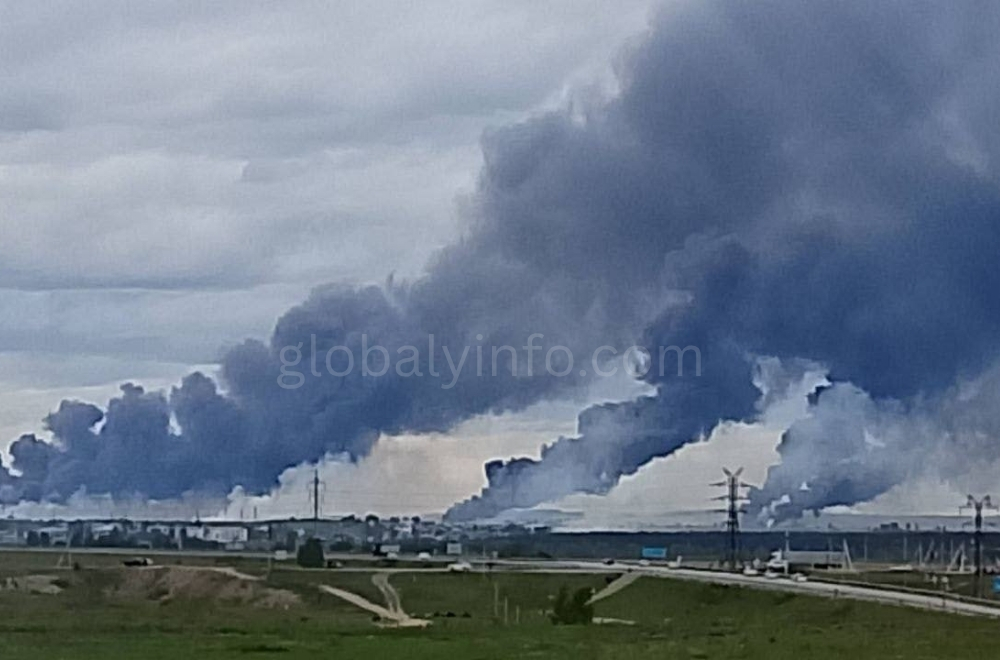Ukraine’s recent large-scale drone attack on Russian air bases, located thousands of miles behind the front lines, marks one of the most audacious operations in the ongoing conflict. This strike, more than 18 months in the planning, demonstrates Kyiv’s ability to strike deep inside Russian territory despite Moscow’s military superiority.
According to a source in Ukraine’s Security Service (SBU), the operation involved smuggling drones into Russia, concealing them in wooden mobile houses atop trucks, and launching coordinated assaults on key military installations. The attack reportedly caused $7 billion in damages and destroyed 34% of Russia’s strategic cruise missile carriers, dealing a significant blow to Moscow’s long-range strike capabilities.
The Attack: A Major Strategic Blow
Targeting Russia’s Bomber Fleet
The June 2025 drone strikes focused on three major Russian air bases:
- Engels Air Base (Saratov region)
- Dyagilevo Air Base (Ryazan region)
- Olenegorsk Air Base (Murmansk region)
These bases house Russia’s Tu-95MS “Bear” and Tu-22M3 “Backfire” bombers, which have been used to launch cruise missile attacks on Ukrainian cities. According to the SBU, over 40 aircraft were hit, including:
- Tu-95MS strategic bombers (key carriers of Kh-101 cruise missiles)
- Tu-22M3 supersonic bombers (used for stand-off missile strikes)
- An A-50U “Mainstay” airborne early warning aircraft (critical for Russian air operations)
Impact on Russia’s War Effort
The loss of these bombers severely degrades Russia’s ability to conduct long-range missile strikes. Military analyst Peter Layton noted:
“Russia will now have to rely more on drones and shorter-range missiles, reducing their ability to strike deep inside Ukraine without risking aircraft.”
The attack also forces Moscow to divert resources to airbase defenses, stretching its already strained military logistics.
Ukraine’s Covert Drone Warfare
Smuggling Drones into Russia
The SBU revealed that Ukrainian operatives smuggled long-range drones into Russia disguised as construction equipment on trucks. These drones were then hidden in mobile homes near the airbases, allowing them to evade detection before launch.
A Growing Drone Arsenal
Ukraine has increasingly turned to domestically produced drones like:
- “Beaver” (Bober) long-range UAVs (capable of reaching 1,200 km)
- “Alyonka” kamikaze drones (used in previous strikes on Moscow)
These drones, combined with Western-supplied intelligence, have allowed Ukraine to strike high-value targets far beyond the front lines.
Historical Parallels: Ukraine’s Daring Operations
Sinking of the Moskva (April 2022)
One of Ukraine’s first major victories was the sinking of the Russian cruiser Moskva, flagship of the Black Sea Fleet. Using Neptune anti-ship missiles, Ukraine proved it could challenge Russia’s naval dominance.
Destruction of the Kerch Bridge (July 2023)
The Crimean Bridge, a $3.7 billion symbol of Putin’s annexation, was struck by Ukrainian sea drones. The attack disrupted Russian supply lines to Crimea and showcased Kyiv’s ability to hit critical infrastructure.
Assassinations of Russian Officials
While Ukraine rarely claims responsibility, several high-profile Russian figures have been assassinated inside Russia, including:
- Zaur Gurtsiev (Deputy mayor & missile targeting expert) – killed in a car bomb (May 2025)
- General Yaroslav Moskalik (Russian General Staff) – assassinated in Moscow (April 2025)
- Armen Sarkisyan (Pro-Russian militia leader) – bombed in Moscow (February 2025)
These operations suggest a broader Ukrainian strategy of psychological and strategic disruption inside Russia.
Russia’s Response & Future Implications
Putin’s Security Dilemma
The attack has embarrassed the Kremlin, forcing Putin to:
- Reallocate troops to protect air bases
- Increase counterintelligence efforts against Ukrainian sabotage
- Escalate missile strikes on Ukraine in retaliation
Will NATO Get More Involved?
While the U.S. and EU have not directly endorsed these deep strikes, they continue supplying intelligence and drones. If Russia retaliates with nuclear threats, Western support could expand further.
Conclusion: Ukraine’s Asymmetric Warfare Success
Ukraine’s drone attack proves that despite Russia’s size, Kyiv can still inflict heavy damage. By striking strategic bombers, Ukraine has reduced Moscow’s ability to launch massive missile barrages, buying time for its forces on the front lines.
As the war drags on, expect more audacious Ukrainian strikes—and increasingly desperate Russian responses.
What’s Next?
- Will Russia escalate attacks on Ukrainian cities in revenge?
- Could NATO supply longer-range missiles to Ukraine?
- Will Putin face internal backlash over security failures?
